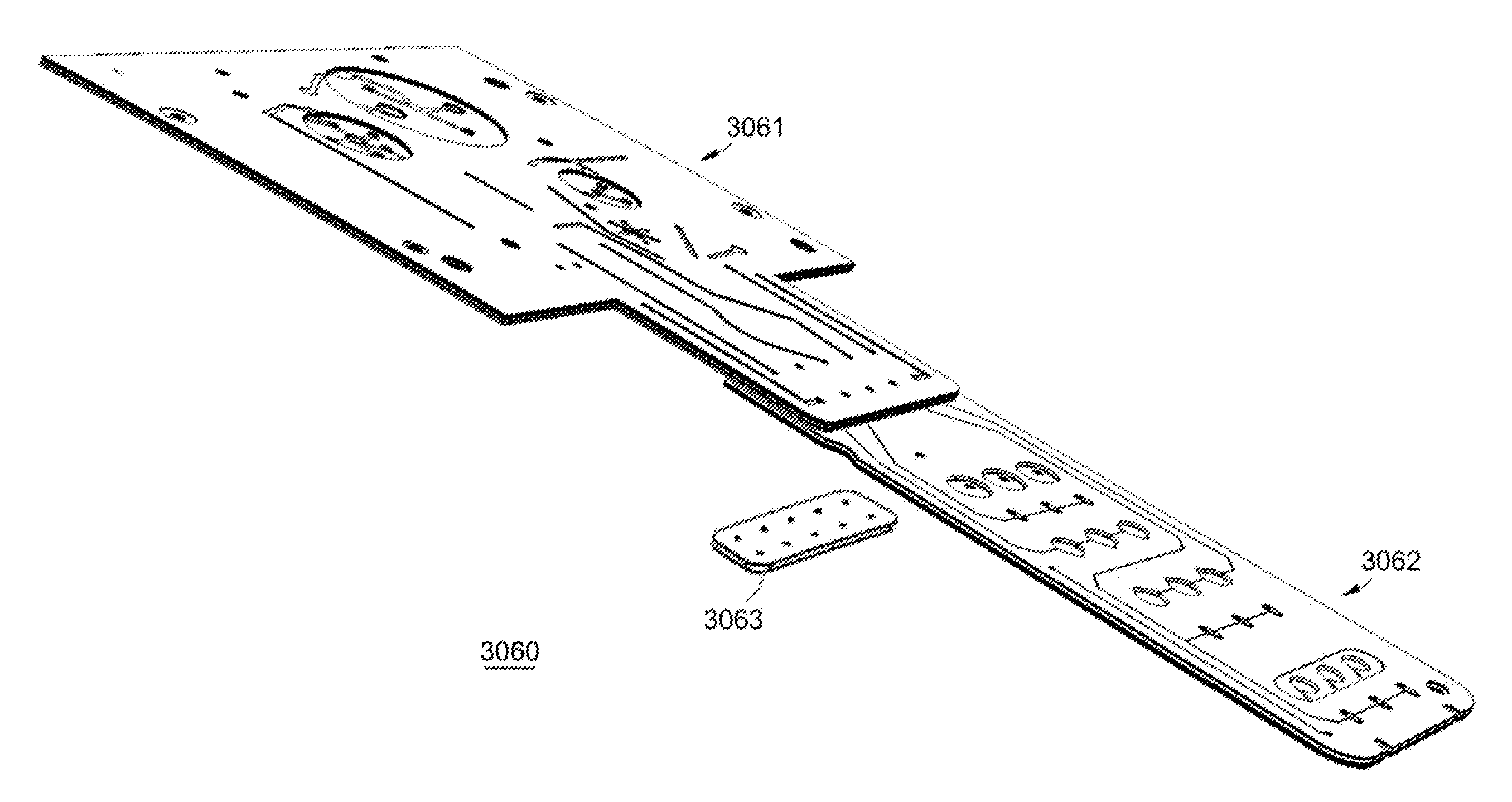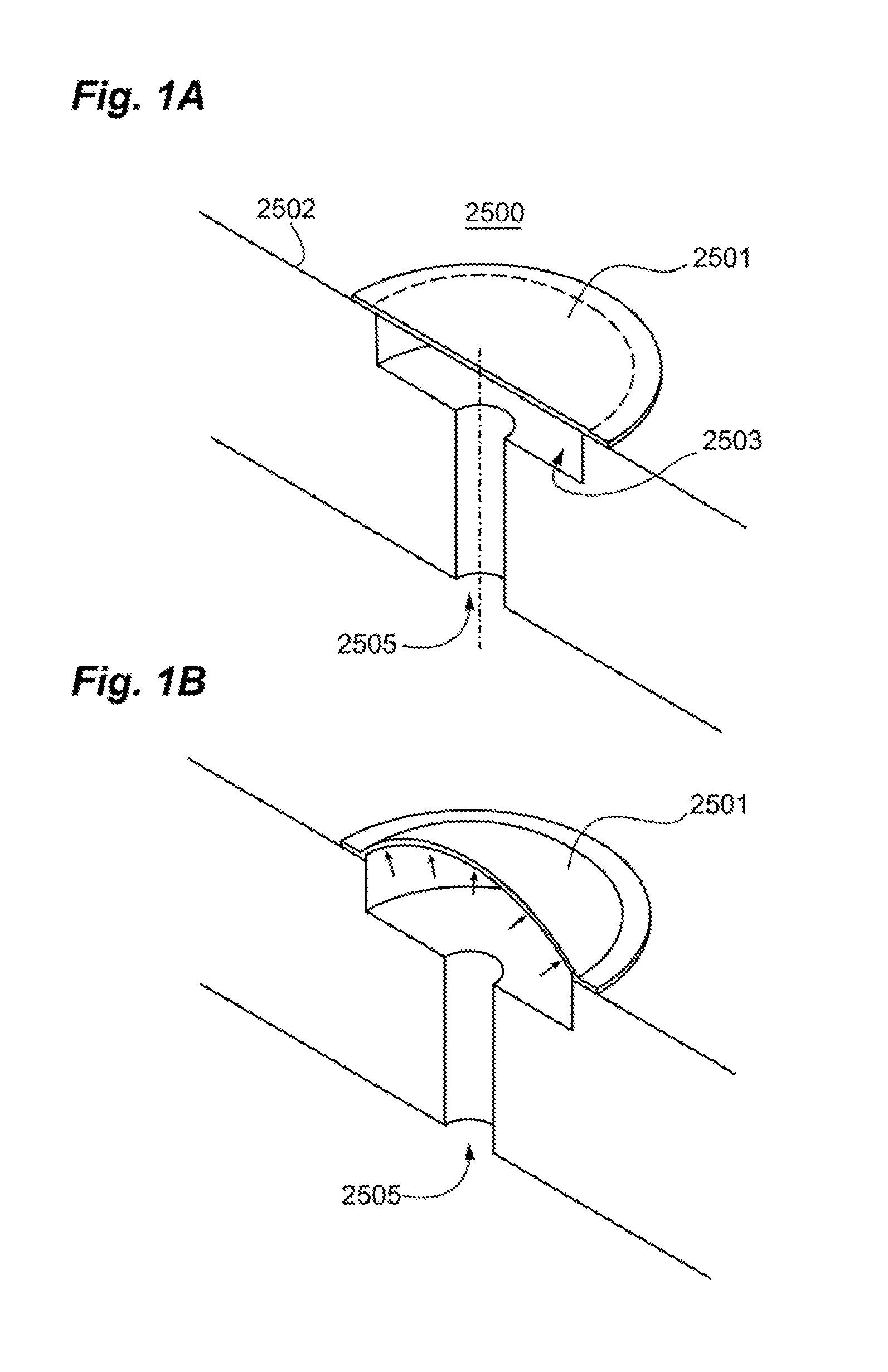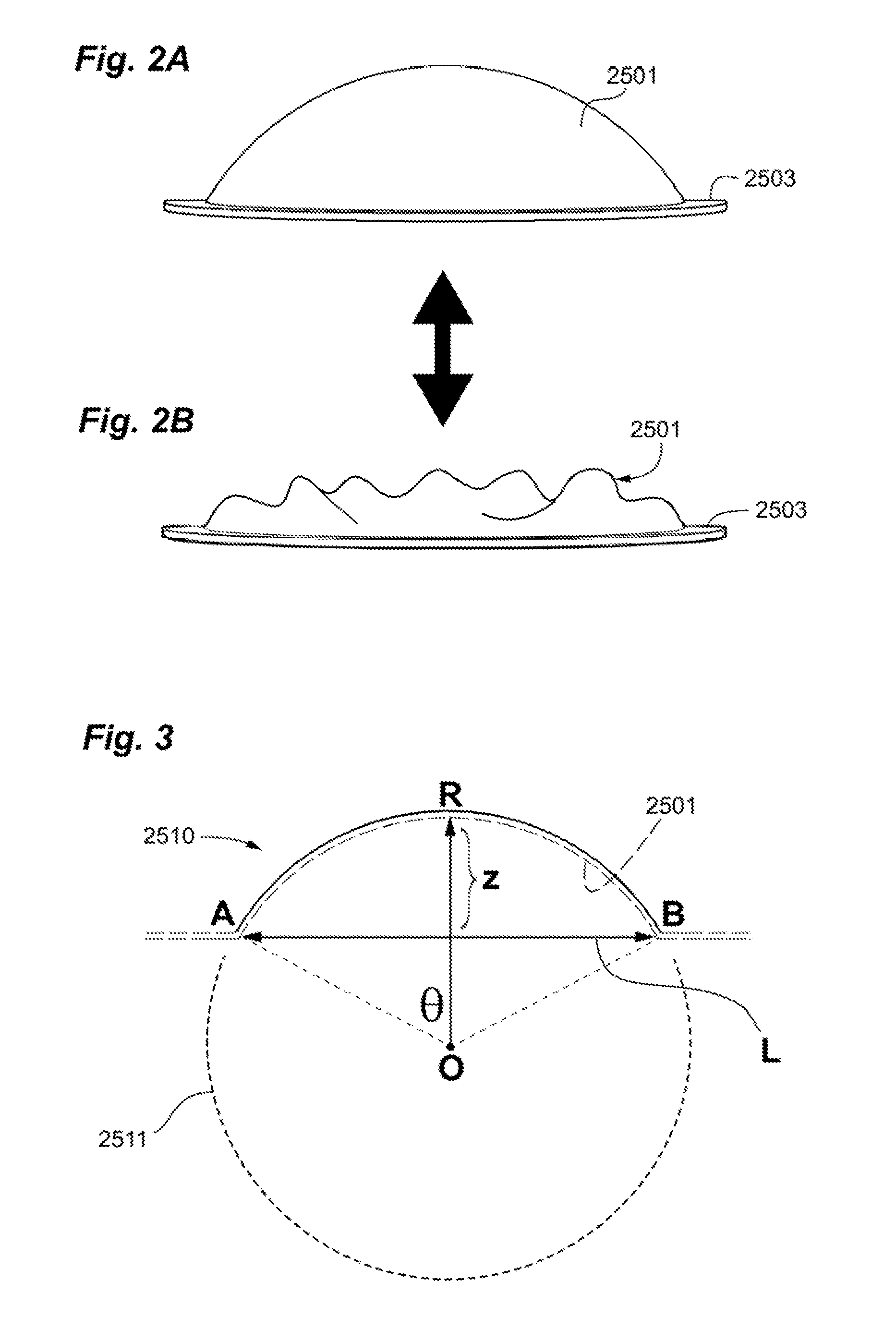Low elasticity films for microfluidic use
a microfluidic and low-elasticity technology, applied in the field of diaphragm technology, to achieve the effect of improving efficiency and speed of operation
- Summary
- Abstract
- Description
- Claims
- Application Information
AI Technical Summary
Benefits of technology
Problems solved by technology
Method used
Image
Examples
Embodiment Construction
[0066]Although the following detailed description contains specific details for the purposes of illustration, one of skill in the art will appreciate that many variations and alterations to the following details are within the scope of the claimed invention. The following definitions are set forth as an aid in explaining the invention as claimed.
DEFINITIONS
[0067]A “cartridge” is an analytical device designed for operation by insertion into a host instrument. The host instrument supplies the pneumatic pressure, pulses, and detection means for performance of the assay. The cartridge contains hydraulic works and pneumatic works, including microscale channels, cavities and chambers. Sample and reagent liquids are conveyed in a hydraulic network of the cartridge or card; fluid flow is controlled and driven by a pneumatic network that interfaces with the hydraulics at diaphragms spanning selected junctions, channels and chambers. Typically, the body of the cartridge or card is made of a f...
PUM
| Property | Measurement | Unit |
|---|---|---|
| Young's modulus | aaaaa | aaaaa |
| elasticity | aaaaa | aaaaa |
| surface area | aaaaa | aaaaa |
Abstract
Description
Claims
Application Information
 Login to View More
Login to View More - R&D
- Intellectual Property
- Life Sciences
- Materials
- Tech Scout
- Unparalleled Data Quality
- Higher Quality Content
- 60% Fewer Hallucinations
Browse by: Latest US Patents, China's latest patents, Technical Efficacy Thesaurus, Application Domain, Technology Topic, Popular Technical Reports.
© 2025 PatSnap. All rights reserved.Legal|Privacy policy|Modern Slavery Act Transparency Statement|Sitemap|About US| Contact US: help@patsnap.com



